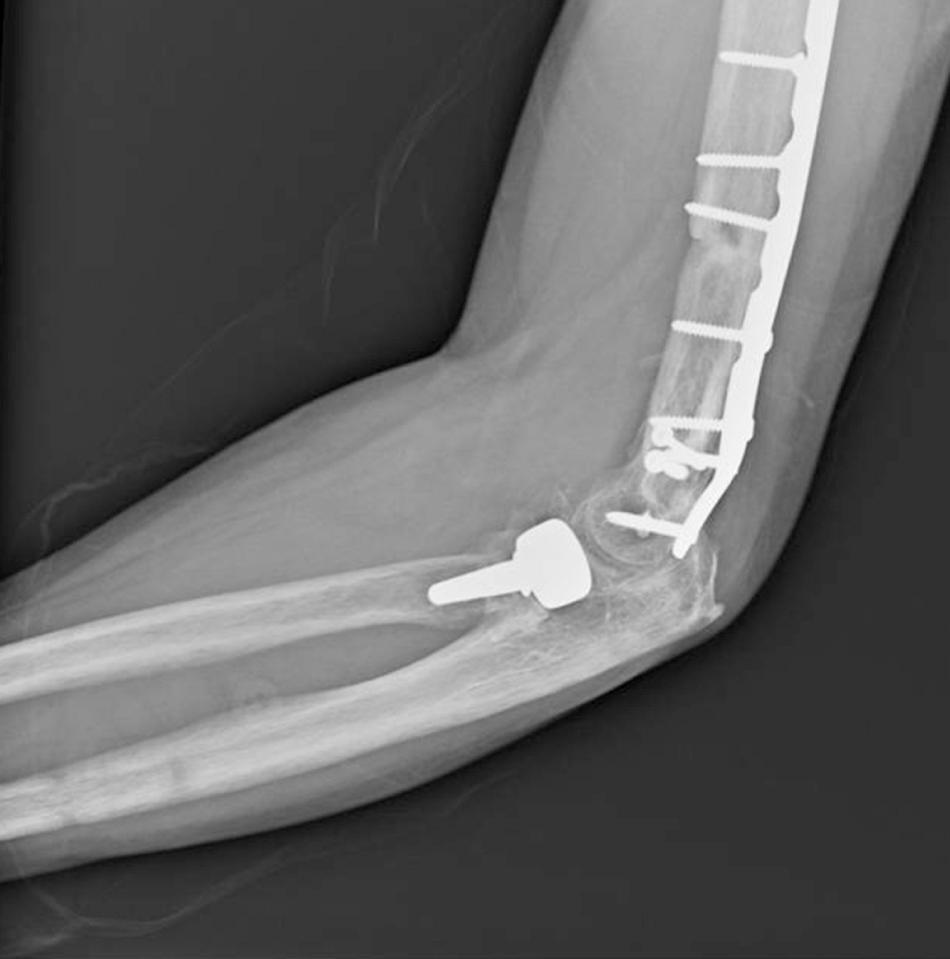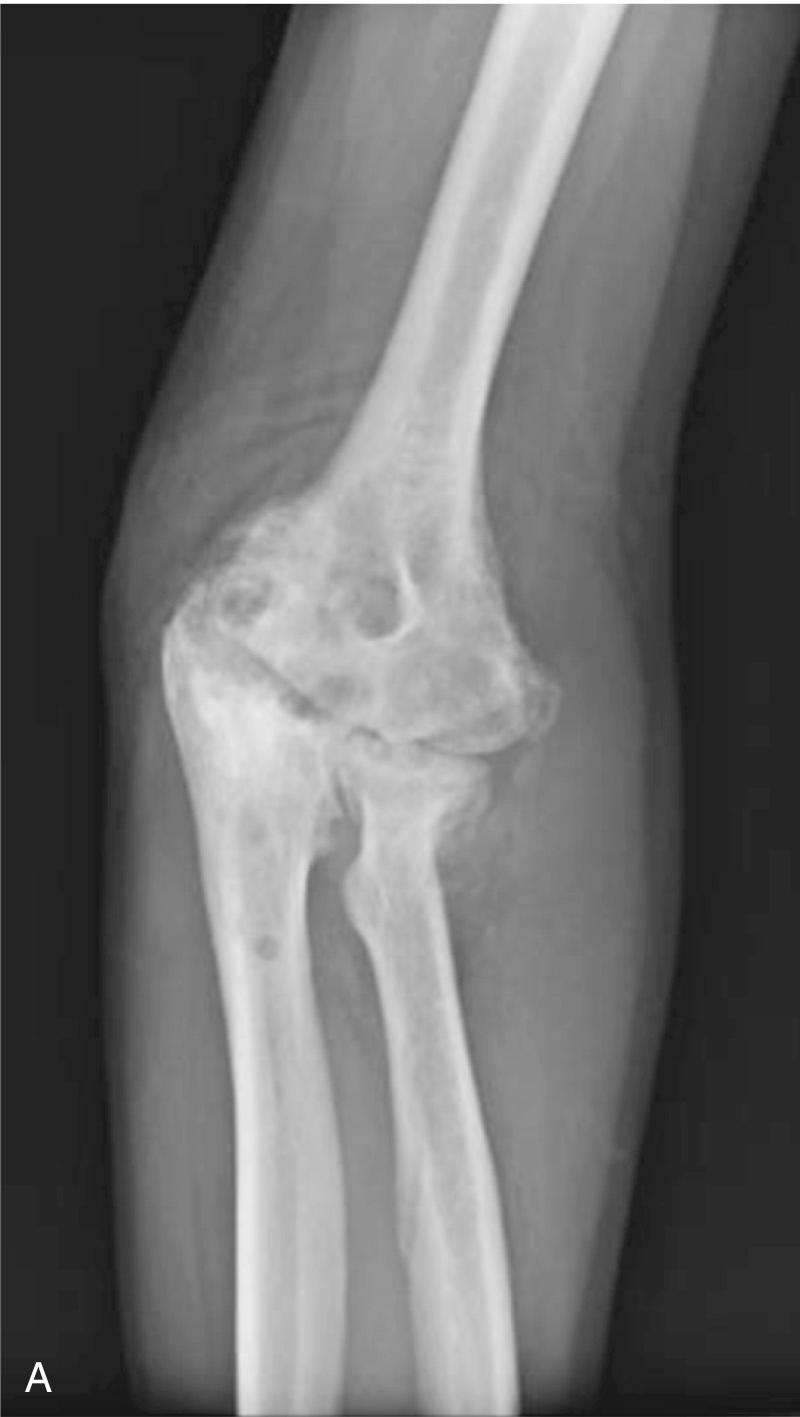Physical Address
304 North Cardinal St.
Dorchester Center, MA 02124
With the advent of immunomodulating disease agents for the treatment of inflammatory arthritis, acute trauma and posttraumatic osteoarthritis have become more common indications for elbow arthroplasty. This distinct type of osteoarthritis may develop as a result of traumatic cartilage damage, joint incongruence of malreduced intraarticular fractures, or chronically subluxed or unstable elbows.
Posttraumatic osteoarthritis differs from conventional osteoarthritis in several aspects and, in many ways, poses greater treatment difficulties. It is often characterized by stiffness, deformity, soft tissue contractures, bone loss, and instability. Typically, multiple previous procedures have resulted in a poor soft tissue envelope, infection, and/or nerve injury. The demographics of posttraumatic elbow arthritis make for a very difficult patient population. This is essentially a salvage procedure, where almost 90% of patients have undergone an average of three previous procedures before total elbow replacement, and 30% have had a complication from previous surgery, including 5% with a surgical site infection.
The radiographic evaluation of posttraumatic elbow arthritis is often made more difficult by the presence of fracture implants ( Fig. 94.1 ). Classification systems described by Hastings and Rettig and by Broberg and Morrey have been shown to have substantial reliability in staging the severity of the disease process. Further, both systems are flexible enough to be applied with equal reliability by observers of differing experience levels. The presence of fracture fixation or replacement constructs appears to lessen the reliability of the Hastings-Rettig classification, probably because of the difficulty evaluating the radiocapitellar articulation.

Few options exist for salvage of severe posttraumatic osteoarthritis. Arthrodesis reliably relieves pain but results in marked functional impairment and is thus a less than ideal option. Interposition arthroplasty may be considered for a young patient, particularly one with elbow stiffness. Restoration of motion and relief of pain can be achieved with a reasonable (62% to 70%) but a less predictable rate of success ; however, this procedure has an even higher rate of complications than semiconstrained total elbow replacement (see Chapter 114 ). Interposition arthroplasty is also not typically considered for patients who perform strenuous physical labor. Differing results have been reported for osteoarticular allograft replacement of the entire elbow joint. Concern about complications, including instability, continued degenerative changes, and graft resorption, have limited wide acceptance of this procedure.
For all of these reasons, total elbow replacement using a linked prosthesis has become the treatment of choice for this difficult problem, even though arthroplasty for posttraumatic arthritis remains technically difficult, with a higher complication rate than when used for other indications. Careful patient selection, with consideration for the need for future revision, is important in this population.
Total joint replacement using a linked, semiconstrained prosthesis is the treatment of choice, particularly for elderly patients with modest activity who have advanced destruction of the ulnohumeral joint with marked narrowing or loss of the joint space ( Fig. 94.2 ). This end-stage disorder generally precludes more limited procedures such as débridement and total joint replacement.

For younger and/or higher demand patients, total elbow replacement should be done only (1) when there are no other suitable alternatives, such as interposition arthroplasty, or (2) after a thorough discussion of the risks and benefits and the longevity expectations for the prosthesis. Specifically, patients should clearly understand that strenuous physical use of the elbow is not compatible with total elbow replacement in its current form.
Previous experience with a semiconstrained prosthesis for the treatment of posttraumatic osteoarthritis revealed mechanical complications of the implant in 17% to 19% of patients, mostly in patients younger than 60 years. Hence younger patients, particularly those engaged in heavy physical work, and anticipated nonadherence are considered relative contraindications for this procedure, and consideration of interposition arthroplasty should be discussed (see Chapter 114 ). Should the interposition fail, total joint replacement may be reliably performed.
Become a Clinical Tree membership for Full access and enjoy Unlimited articles
If you are a member. Log in here